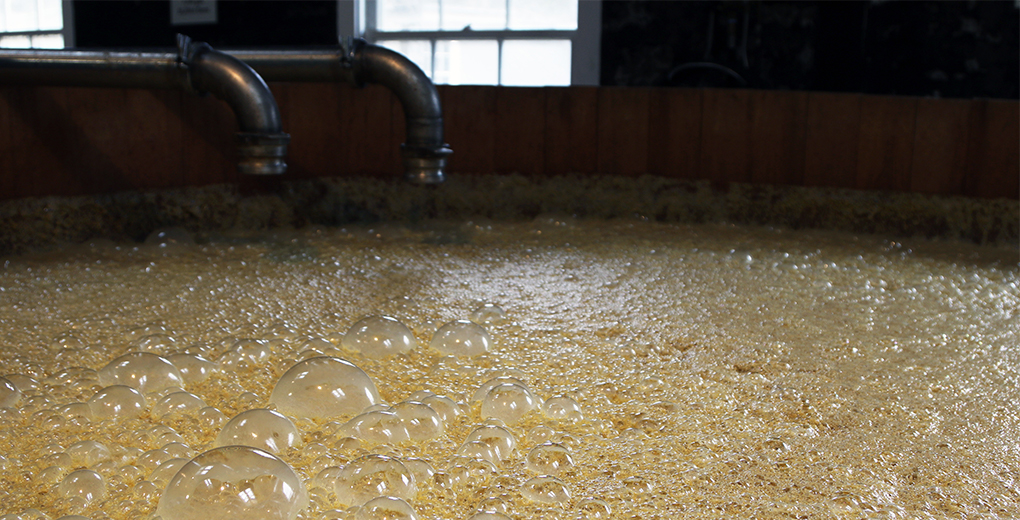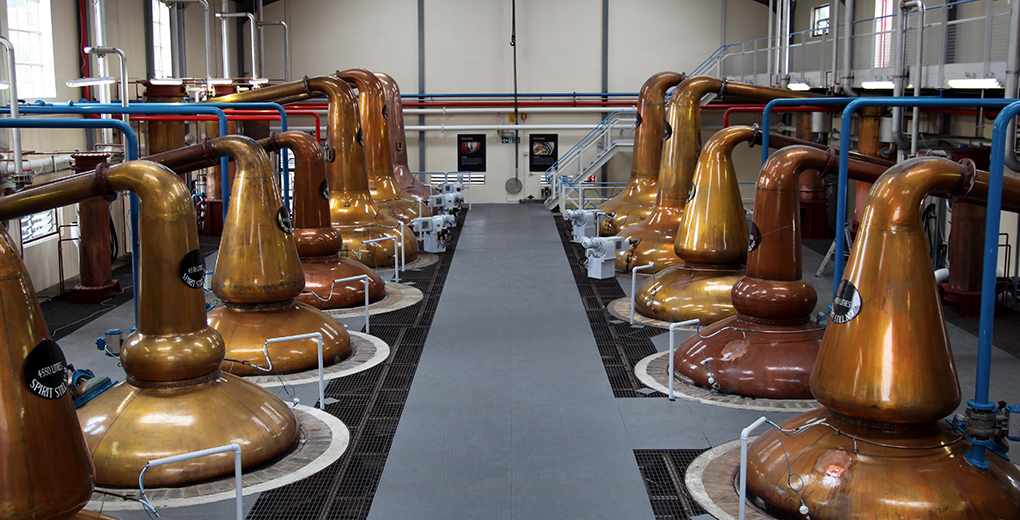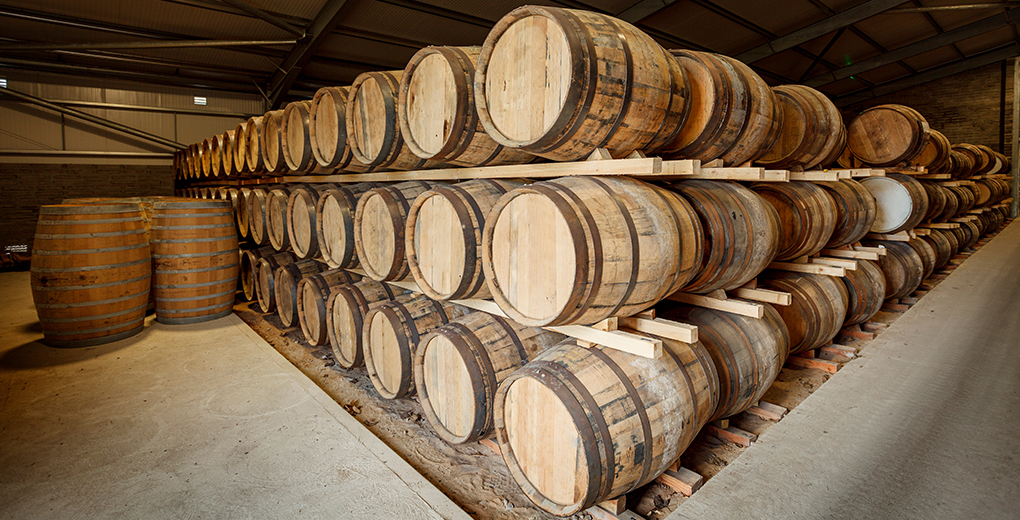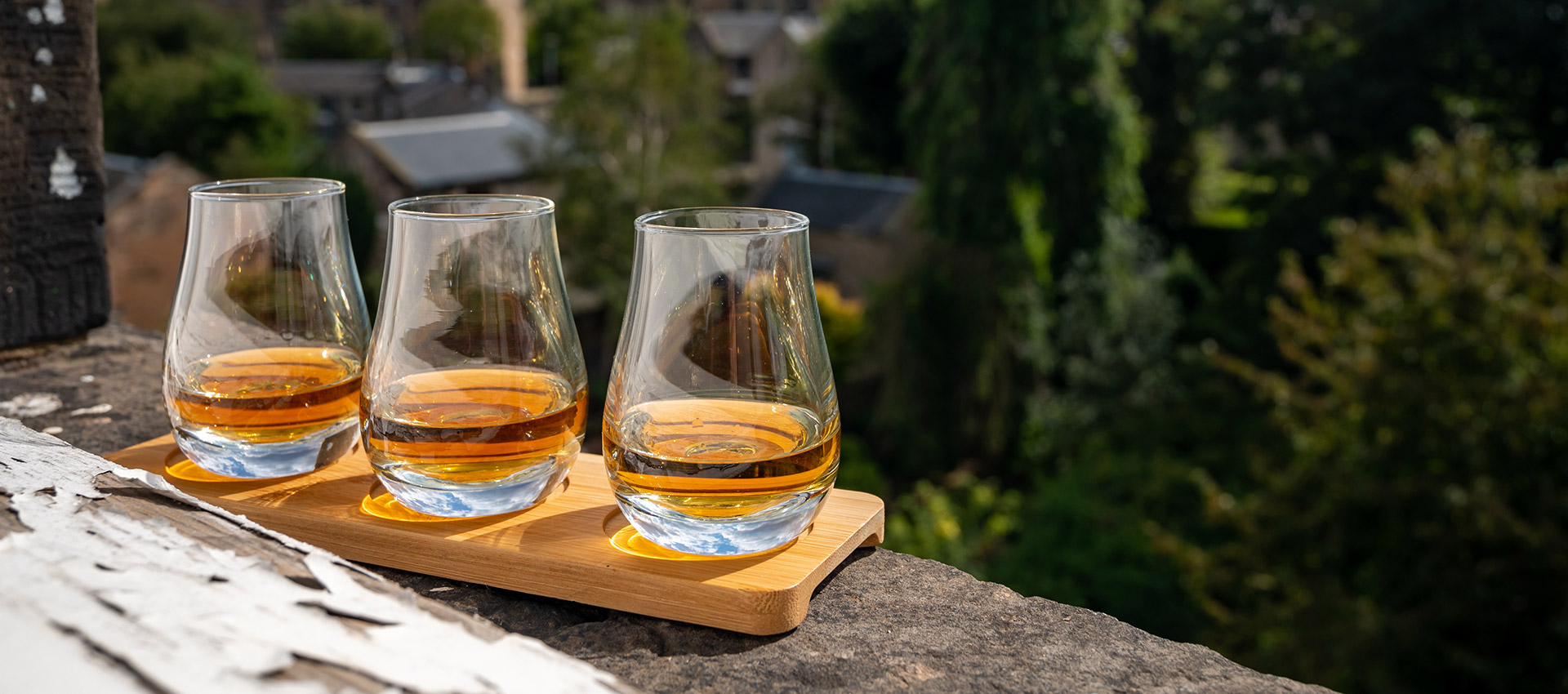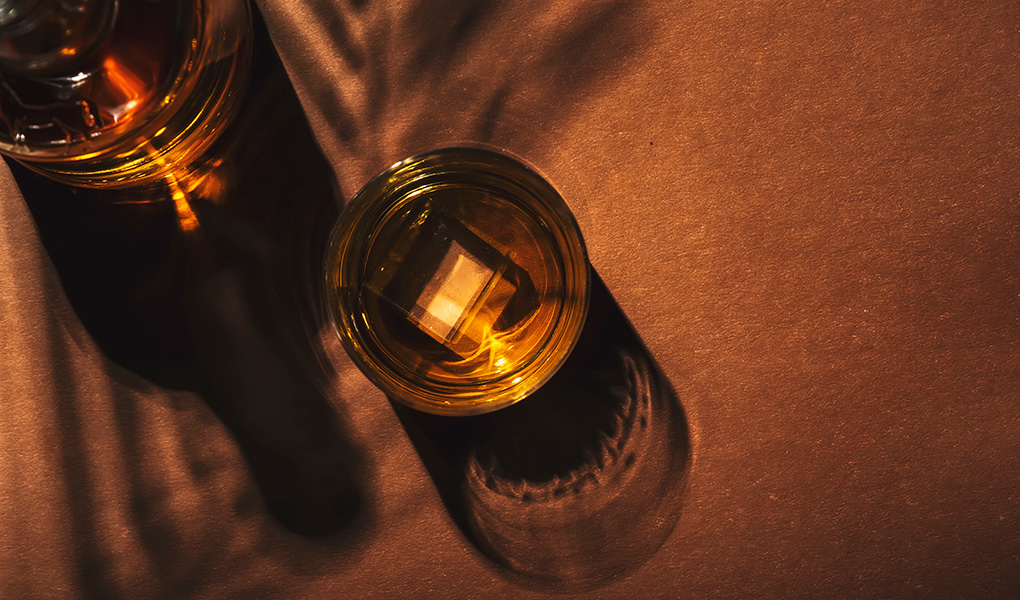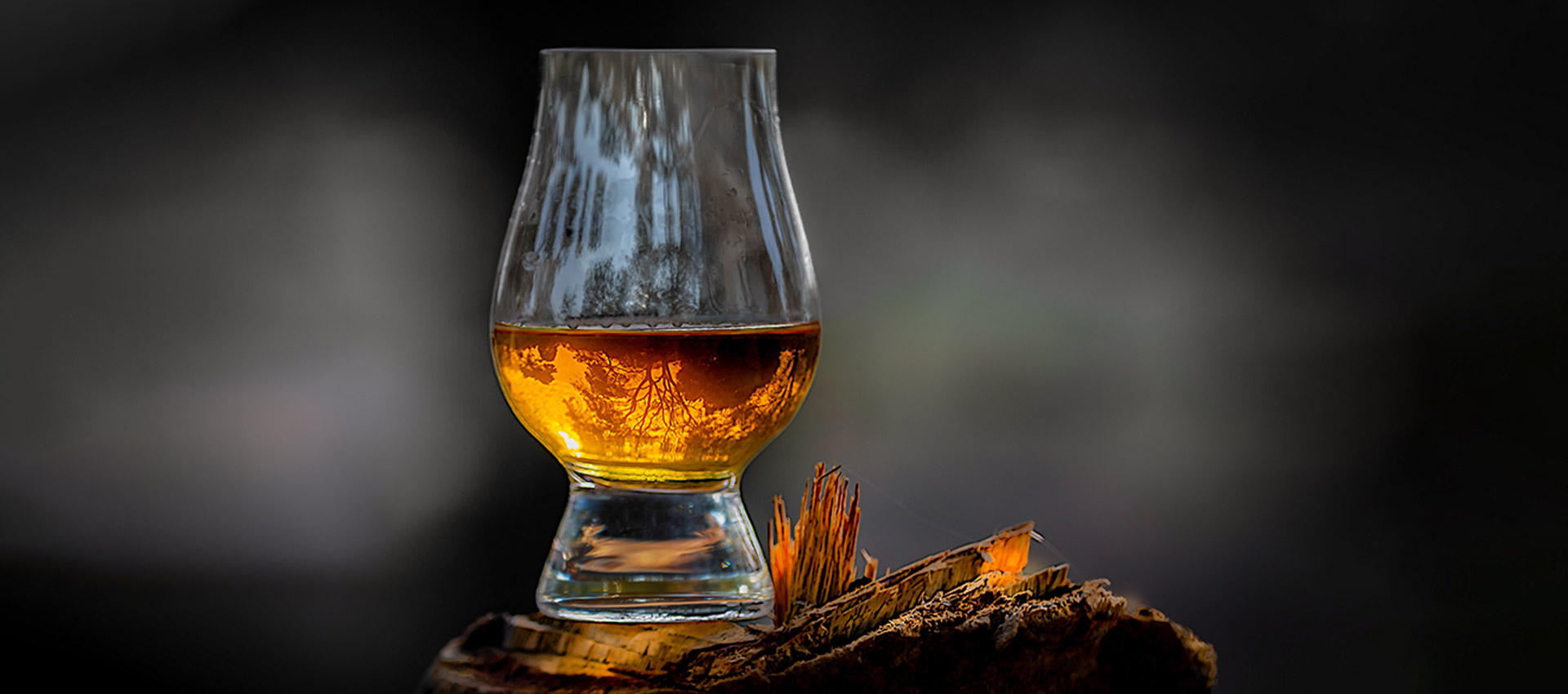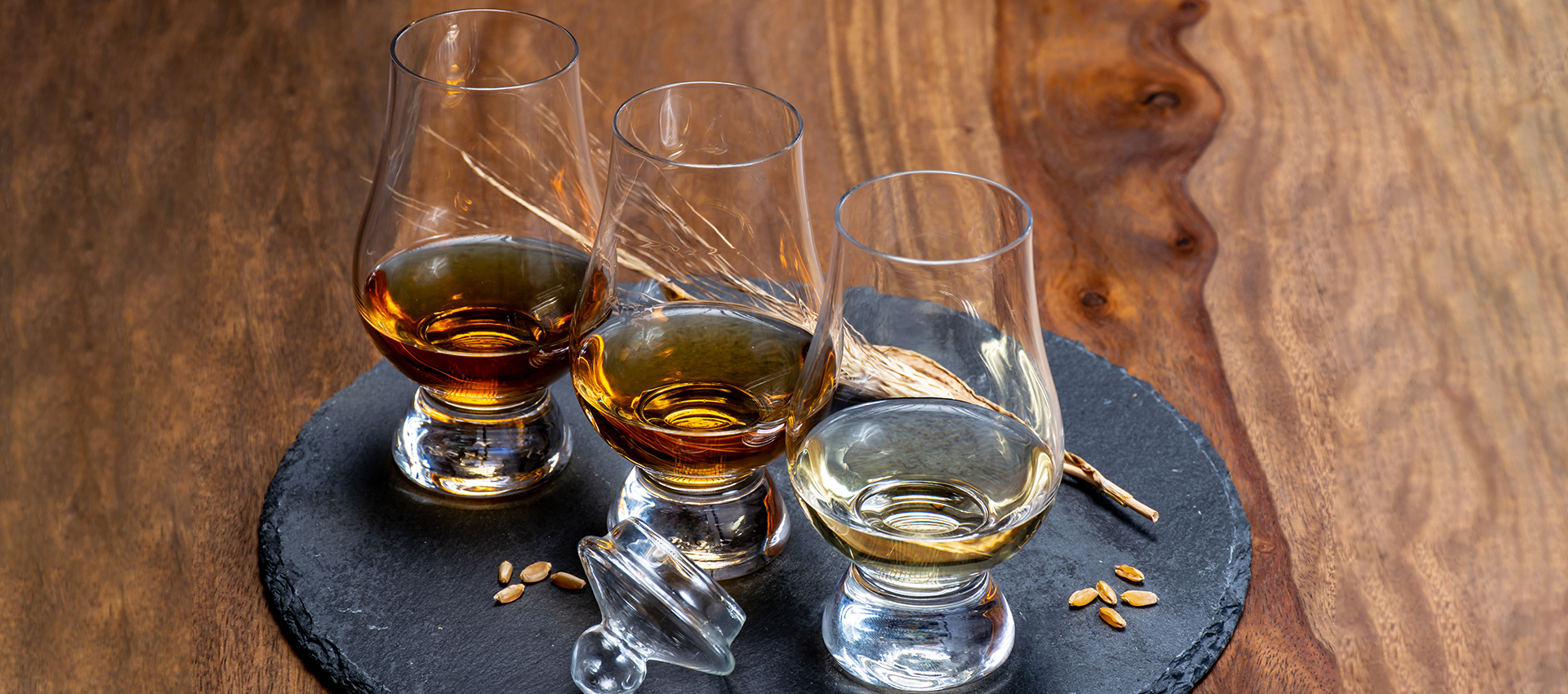To make any type of Scotch, distilleries follow these six basic steps:
- Malting
- Mashing
- Fermentation
- Distillation
- Maturation
- Blending
MALTING
Barley is a key cereal grain used in Scotch whisky. During the malting process, the barley is soaked in hot water for two to three days to initiate germination, and then dried in a kiln.
Distillers may also use peat fire to dry malted barley, which imparts peaty and smoky flavours in whisky. Once dried, the barley is called “malt”.
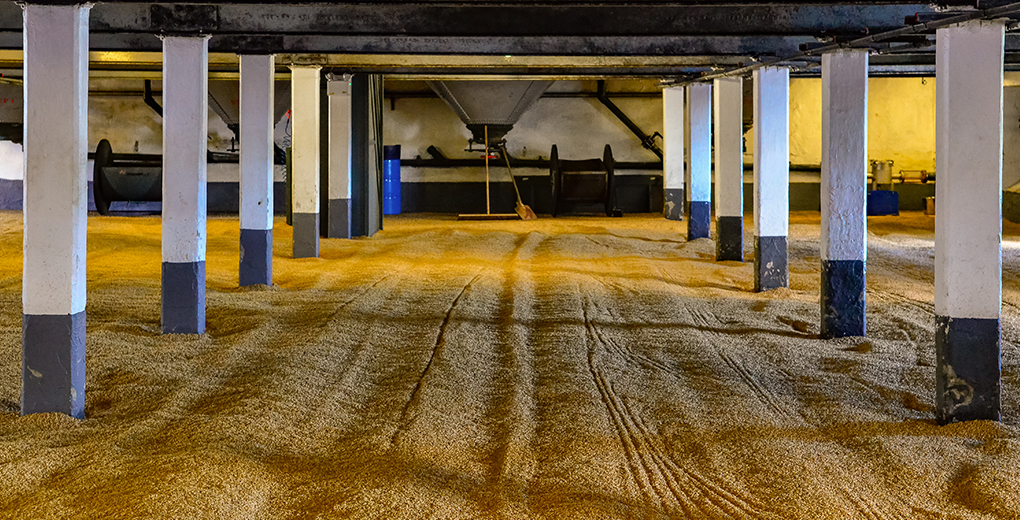
MASHING
In a mill, the malt is grounded into fine particles known as “grist”. The grist is then mixed with hot water in a mash tun vessel.
During the mashing process, the malt releases enzymes that convert the starch content into sugar required for fermentation. The resulting sugary liquid obtained from the mashing process is called “wort”.

FERMENTATION
Yeasts are added to the wort for fermentation, which takes around 48 to 96 hours. The type of yeast strain used also influences the character of whisky.
During this step, the yeast breaks down the sugars into ethyl alcohol and carbon dioxide. The resulting liquid, known as “wash”, has a low alcohol content ranging from 8% to 10%.
DISTILLATION
Scotch whisky is distilled twice in wash still and spirit still respectively. During the whisky distillation ** process, the wash is heated, vapourised and condensed back to liquid again to remove the impurities.
The resulting liquid from wash still is called low wines, which is distilled again in the spirit still to produce a pure spirit of 65% to 70% alcohol content.
MATURATION
The distilled spirit is mixed with water, which is then stored in oak casks to age or mature for a minimum of three years in Scotland to be called Scotch whisky.
Majority of the flavours and aromas in whisky comes from the interaction of liquid and the casks during the maturation process.
BLENDING
Blending is an optional step after maturation. This process is required for producing blended whiskies such as blended malt Scotch whisky, blended grain Scotch whisky, and blended Scotch whisky.
In the blending process**, the master blender combines whiskies from various distilleries or casks to produce a desired taste of Scotch and maintain a unique character of the distillery. After blending, the whisky proceeds to the bottling process.


